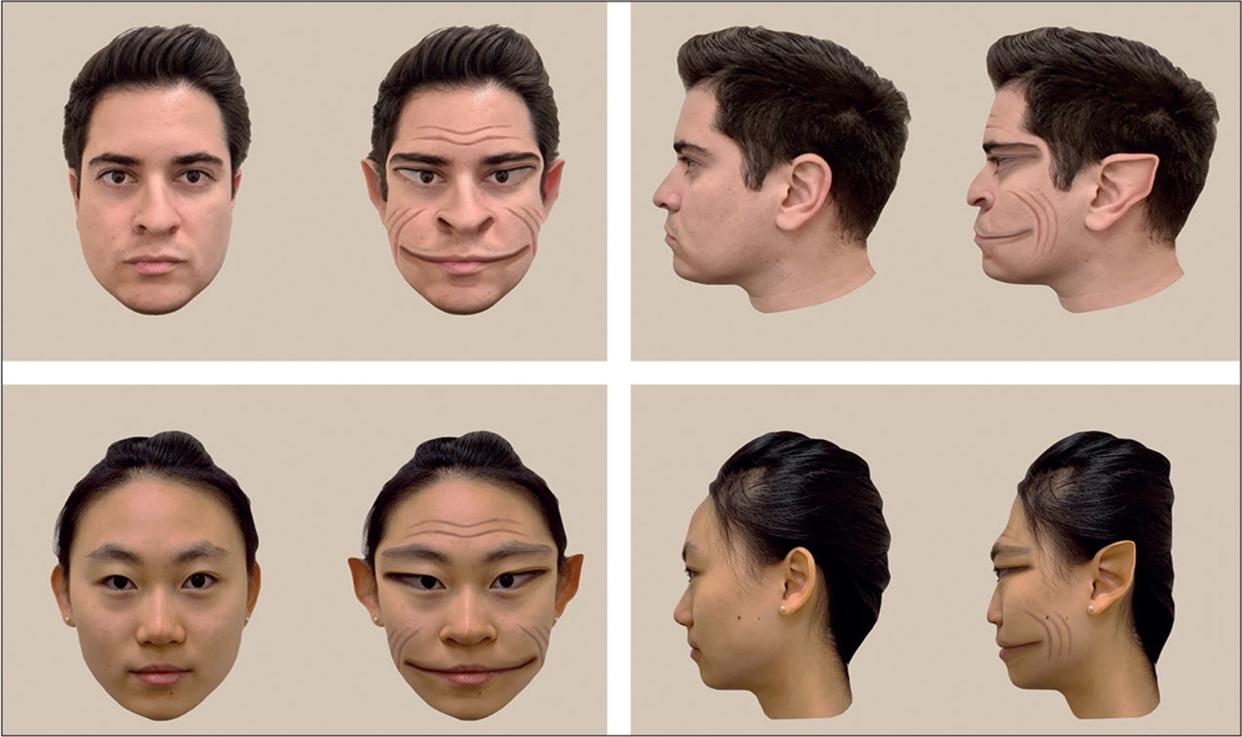'I freaked out': Man with 'demon face syndrome' hopes story can help other patients

Victor Sharrah had always been a social person, but for the past three years, he's found himself more withdrawn.
That's because ever since he woke up one day in November 2020, Sharrah, 59, has been seeing people's faces distorted or as he put it like "demons."
"I woke up one morning that way and freaked out," Sharrah told USA TODAY.
Sharrah is one of the very few people in the world with prosopometamorphopsia, or PMO, a rare condition that causes a person to see severely stretched features with deep grooves on the forehead, cheeks, and chin, according to a study recently published in The Lancet.
Terrified of what was happening, he sent a message to a support group he was a part of for bipolar disorder.
"This woman came back to me and she said 'I can explain to you what's going on if you give me five minutes and give me your phone number,'" Sharrah recalled.
Seeking answers and terrified, Sharrah took the call, and it would bring him some relief.
"It was scary. I was ready to have myself committed. I thought I'd really flipped my lid," Sharrah said.
How rare is PMO?
According to a website on the rare disorder, there have only been around 75 confirmed cases of people with PMO.
The condition varies from person to person but is characterized by a distortion of faces including features appearing droopy, smaller, larger, stretched, or in a different position, the website said.
It's not entirely understood what causes someone to experience PMO, but according to the study, some cases could be linked to head trauma, stroke, epilepsy, or migraine.
Sharrah said he had a head injury 17 years ago that required him to be hospitalized. In 2007, while working as a long-haul driver the door to his trailer became jammed. As he tried to unjam the handle, he fell backward and hit his head on the concrete.
According to the study, the head injury is one possible explanation for Sharrah's PMO. The other is carbon monoxide poisoning, which Sharrah experienced just four months before his symptoms started.
Additionally, MRI scans found a lesion in the hippocampus on his brain.
Researchers create visualization of Sharrah's distortions
According to the study, PMO typically means faces look distorted all the time. However, in Sharrah's case, the distortions only happened when he was looking at someone in real life - not in photographs or on a computer screen.
This allowed researchers to create visuals to try and understand the distortions Sharrah was seeing.
“Through the process, we were able to visualize the patient’s real-time perception of the face distortions,” lead author Antônio Mello, a PhD student at Dartmouth University's Department of Psychological and Brain Sciences said in an article published by the university.

Researchers took a photograph of a person and then showed that image to Sharrah on a computer screen. He would then look at the person's face in real life and tell researchers the differences he was seeing compared to the photo on the screen. That information was then used to create modified images to match what Sharrah described.
While the images present an idea of what Sharrah is seeing, he said they don't tell the whole story of how traumatic the experience really is.
"I mean, the facial features move with them. I don't know how to say it. It's like it's kind of like talking to a character out of a Star Trek episode," he explained.

Raising awareness
Sharrah said he's been speaking out publicly about his experience with PMO, in hopes of raising awareness and helping anyone else who may be experiencing these symptoms and is unsure what's happening to them.
"This has blown up far more than my expectations. It's a little overwhelming but exciting at the same time to think that, maybe it's going to help somebody," he said.
According to the study, it's not uncommon for someone with PMO to be misdiagnosed.
“We’ve heard from multiple people with PMO that they have been diagnosed by psychiatrists as having schizophrenia and put on anti-psychotics, when their condition is a problem with the visual system,” Brad Duchaine, an author of the study, and the principal investigator of the Social Perception Lab at Dartmouth University said.
Sharrah said the most important thing for him is " to get the word out there so that people aren't institutionalized and medicated for psychosis when what they have is a vision malfunction."
This article originally appeared on USA TODAY: What causes prosopometamorphopsia, the rare 'demon-face' syndrome PMO
